LATVIA - Best Enjoyed Slowly!
-
Hits: 21376

Every time I meet a new person and introduce myself to them, the first questions asked to me is, "Where is Latvia?" and, "What is it like?'' It is a little difficult to paint a picture in few seconds for someone of a place they have never been to and have no vision of. Usually, my answer is something along the lines of, "It’s very green with lots of lakes, rivers and woods and it’s eco-tourism friendly, and 1/3 of our country is washed by the Baltic Sea." At least this gives a faint and quick idea of what Latvia is like; however, there is much, much more to it, starting with the history, to deep-rooted traditions and rituals practiced by the people to this day. So, when traveling around Latvia this summer whilst visiting my family, I decided to write this article (with lots of photos!) for all my English-speaking friends so that you can finally see how beautiful my country is!
Just to start out, here are some bare facts: Latvia is about the size of West Virginia consisting of 64.589 sq.km. (24.937 sq. miles) with roughly 2 million inhabitants, only 60% of which (or 1.2 million) are of Latvian descent. And I know you will ask what Latvian language is similar to; well, it is really not similar to anything! Latvian is its own language (Baltic Language), with close relation only to Lithuanian language, but the two are not mutually intelligible.
Latvian is one of the hardest languages in the world to learn because of very complicated conjugations of words depending on the feminine or masculine gender as well as 7 different noun declension classes. Here is a small example:
Grass is green – zāle ir zaļa
Trees are green – koki ir zaļi
Flowers are green – puķes ir zaļas
Pencil is green – zīmulis ir zaļš
In all of these cases (zaļa, zaļi, zaļas, zaļš) they still only mean, GREEN; however, it needs to agree in case, number, and gender with the noun it modifies. Sounds complicated in theory, and it is in practice as well!
But enough with the grammar lessons, time to do some traveling! The main tourist attraction and destination in Latvia is our capital, Rīga. Rīga has been named "The European Capital of Culture 2014" and for good reason. The year of foundation of Rīga is deemed to be in 1201, though it existed as a settlement long before that time. It takes pride in the traditional Old Town architecture and historic buildings. Old Town offers cobblestone streets, quaint little restaurants where you can try traditional Latvian foods (like pork chops, baked potatoes, or potato pancakes) or simply sit at a street-side cafe or bar and try our own brewed beer with cheese and smoked meats. For more serious visitors Rīga offers lots of museums, theaters, opera houses and ballet performances, as well as outside concerts and events. Getting around is very simple by public transportation, taxis or rental cars.

For more adventurous types, Latvia offers smaller towns scattered all around the country – Ventspils sits right on the shore of the Baltic Sea. Turaida and Sigulda has one of the most beautiful sceneries in the country and is also called, "Little Switzerland." Cēsis is proud of its Livonian era castle and castle ruins. And of course, my own town, Valmiera! Valmiera is where I was born and grew up before getting lost in the world.


Though there is a lot to see in cities and towns, I would like to show you the part that I am always the most excited about; and those are the green parts of Latvia, deep in the country away from everything and everyone, where one can go hike in the woods, pitch a tent in a grass field, or camp by a lake listening to the sounds and voices of birds, frogs and other critters. And to take advantage of the untouched nature and to explore what there is to see, we headed out on a little road trip around Latvia.
Our trip started with a visit to my grandparents’ house where I used to spend my careless childhood days climbing trees and swimming in the lake. Yes, one can swim (dive, jump, boat etc.) in any lake, river or pond in Latvia, and you can take your dog or cat (or horse) for a swim too!

Ozoli is a very small village surrounding the lake and Ozoli Manor, which was the Early Classicism style manor-house built for count George Johann von Mellinn at the end of the 18th century.

Now the manor is turned into a library, but is in need of some renovations.
Ozoli just like many other off-the-beaten-path places in Latvia, can be reached only by traveling on gravel roads, passing woods, and wheat, oat, and / or rye fields.

For our next destination, we have chosen the impressive Rundāle Palace which (shame on me) I had never seen nor visited before. Rundāle Palace is one of the most popular tourist sites in Latvia. The gorgeous baroque and rococo style architecture and interior awaits visitors in nearly 30 rooms of the palace. The Palace was built as the residence for the Kurzeme duke Ernst Johann Biron around 1736 – 1770.

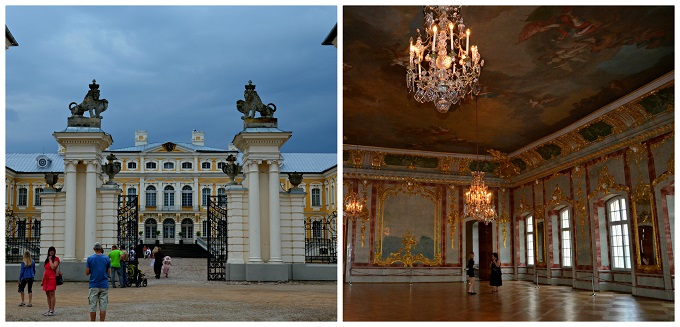
It is also worth taking a walk around the unique French style park with its beautiful rose garden. Apart from it now being a museum and a tourist site, the premises are also used for various celebrations and cultural events.

Continuing our adventure, we decide to go and spend a day on the beach. Latvia has 500 kilometers of beach along the Baltic Sea, modern port cities, fantastic resort cities, old fishing villages, quiet, secluded and even unruly pockets of nature and diverse relaxation options. The Baltic Sea coast is very varied, starting with wild western Kurzeme beaches with high cliffs, to unusual pebble beaches in Tūja, to modern resort facilities in Jūrmala.
The Baltic Sea has a very important part in every Latvian’s life and no summer goes by where we do not go out to the beach to soak up the sun, lay in the sand and dip our toes in the water! I just could not imagine myself visiting Latvia and not getting out to spend a day on the beach…

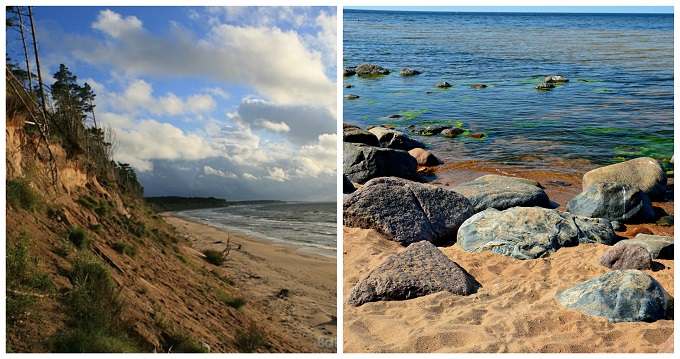
It is also worth mentioning that during heavy storms, small pieces of amber are washed ashore, and this semi-precious stone has become one of the symbols of Latvia. Jewelry and various souvenirs are made from it, so next time you walk on the beach of the Baltic Sea, keep your eyes open for some amber!

During my last trip to Latvia, we visited Kurzeme which is in the western part of Latvia. So, this year we decided to head south and visit Latgale which is the most rural part of Latvia with lots of lakes and woods – a great place for anyone willing to get away from it all! Our trip was concentrated around Lake Rāzna which is the largest lake of Latvia by water volume and the 2nd largest by area (57 sq.km. or 22 sq. miles). In windy weather the ripples on the lake’s surface are much like sea waves. Visitors are attracted to the sandy beaches, boating and fishing possibilities, and various aquatic sports facilities. As our cabin for 2 nights was right on the lake, we got to go swimming and watched the sun set from in the water.

White birch groves are another typical feature of the Latgale natural landscape and one of the first things I think of when remembering Latvia in general. The white trees are a big contrast to the green grass fields and stand out from far away!

Though we do not have any mountains in Latvia, we do have some hills which reward visitors with breathtaking views of the panoramic landscape. One such hill is Lielais Liepu kalns which is the 3rd highest hill in Latvia reaching 289.3 meters (948 feet) above sea level. Once we got to the top of the hill, there was a watchtower reaching additional 34 meters (112 feet) high (the highest watch-tower in the country!) offering a bird’s view of the land far over the tops of the trees. As I am scared of heights, I only made it to the 4th platform (out of 7) but I sure did better than my mom and aunt who stopped at the 2nd platform!


We made a quick stop at another hill called Mākoņkalns (Hill of Clouds) to absorb even more panoramic views of the gorgeous landscape.
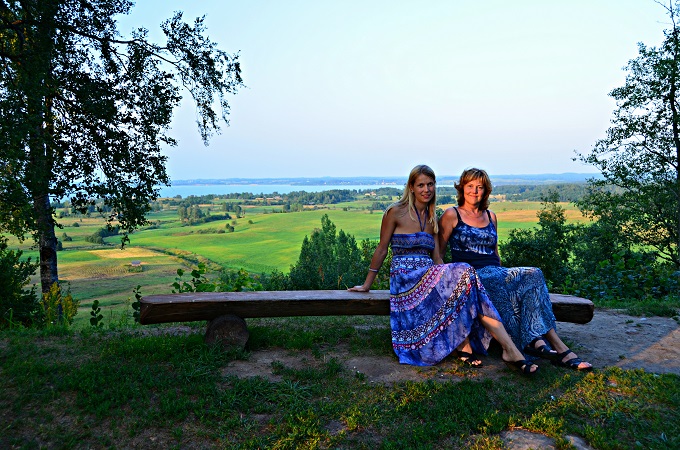
Continuing our adventures, we decide to go and see Velnezers (or Devil’s lake) which is very unusual in appearance. The water of the lake is extremely clear and has a mixture of bluish green color. The plant and animal life of the lake is scarce (and almost non-existent) compared to other lakes. For these reasons, the lake has been associated with supernatural phenomena, such as magic pull, negative energy, and people did not wish to live near it. Some say they feel odd vibes when standing by the lake but some consider it just a rumor. I have to admit, I felt a little intimidated and had no desire to spend a lot of time here (despite the beauty of the place)!

To mix things up a little bit, we head on to see some arts and crafts. Ceramic art (or pottery) is one of the symbols of Latvia, especially Latgale region. In the past, many Latgalian houses had a potter’s wheel for producing ceramic wares, but nowadays it is an art that needs to be mastered and knowledge is often handed down from generation to generation. Pottery was (and is) made like works of art and potters produce colored, glazed ceramics with various Latvian symbols. After watching the master potter in action, each one of us also had a chance to sit down by the wheel and produce whatever we felt like from a ball of clay. I made a plate which will later get ‘’cooked’’ in the oven to harden it and then glazed and mailed to me! A hand-made souvenir!

There was also a little museum where we could see various pieces of pottery dating back several hundreds of years to nowadays as well as see different glazing colors and techniques. The candleholder (pictured below) is a copy of the one that was made in this very same place and presented as a gift to Pope John Paul II when he visited Latvia in 1993.

Another interesting place with rich traditions was the 'Maizes Muzejs', or "Bread Museum." Rye bread in particular has become one of the symbols of Latvia. Since ancient times agriculture has been a part of life and centuries-old farming traditions have been preserved until today. Here we could try our hand in grinding flour old-style on a rock-wheel, sing songs, dance and have our bellies filled with a tasty meal served in traditional pottery-ware.

One cannot visit the Latgale region and not go to the Aglona Basilica. It is a Roman Catholic shrine and a site of pilgrimage, well-known beyond the borders of Latvia and regularly visited by numerous pilgrims. The two-tower church building is worth seeing regardless of one’s religious belief: the white baroque construction, the church interior and the attractive untouched surroundings are impressive and stirring. The Basilica contains 10 altars, and an event of particular importance was the visit of Pope John Paul II to Aglona in 1993.

Various churches can be found all over Latvia – big cities, small towns or villages. Sometimes there will be 2, 3 or more churches within eye’s sight, regardless of denomination or religion practiced – a catholic church can be right next to an orthodox church and opposite to a synagogue. Orthodox churches are especially colorful and rich in exterior and interior decorations.

Another characteristic feature of Latvian landscape is the many castles and castle ruins scattered along the rivers, on top of the hills, or hidden deep in the woods away from the enemy. There are about 140 medieval castles and ruins in Latvia some of which have been restored and turned into museums or hotels, some are in the process of being excavated, and some have been left untouched and wild. The architecture of the castles vary greatly dating back to the 13th century all the way up to the beginning of the 20th. During our trip we stopped by and saw Valmiera castle ruins, Koknese castle ruins, Gaujiena castle ruins, Dikļi castle, Ludza castle ruins, and Cēsis castle and castle ruins. Some of the most impressive and well preserved (restored) castle complexes are in Turaida.


Many mansion-style buildings (‘’modern-day castles’’) were later built alongside various older castles in late 18th and 19th centuries. Many of these are well preserved to this day and are restored offering restaurants, conference rooms or hotels with an option of a haunted-room experience for the brave-hearted!

Being a big nature lover, I have to admit I was a little worried that big amounts of lumber exports in the recent past might have negatively affected Latvia’s natural flora and fauna, but I was pleasantly surprised to see that the landscape had not suffered. And environmental experts and tourists can still call Latvia "one big nature park." More than 3,000 lakes abound with 30 species of fish, and civilization has refrained from infringing upon some 10 percent of Latvia's natural wild spaces. Even endangered species seem to thrive in our forests, fields and seashores. And even though we got a rare glimpse at some of the wildlife, it was always too short to manage to take a good photo. However, many of the Latvian farm animals were more than willing to pose for a photo – Latvian brown cow, sheep, and horses. Even a hedgehog came out of a bush for a photo! And of course the white stork! Ancient Latvians believed in the blessing brought to a home by a nearby stork’s nest; therefore, in Latvian, storks are also called ‘’svēteļi’’ with the connotation of ‘’blessing’’.
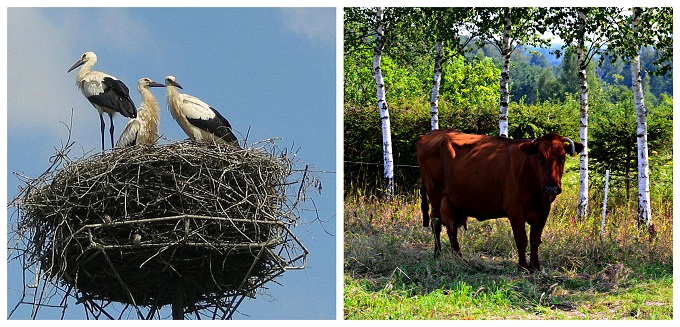

And to sum it all up, here is what ‘’Best enjoyed slowly!’’ really stands for:
‘’For travelers, the best thing about Latvia is that it is so compact. Its 500 km of sandy beaches are easily reached from historical towns where medieval hanseatic foundations support baroque and art nouveau buildings that become venues for cultural festivals during the summer. Families of storks happily give their seal of approval to the unspoilt nature, fresh air and clean water around them. In addition to Riga, its spectacular gateway, there are 6 other UNESCO world heritage listed sites. A trading hub for over 800 years, it is well versed in welcome. With such a variety, Latvia is best enjoyed slowly.’’ /Latvian Tourism Portal/

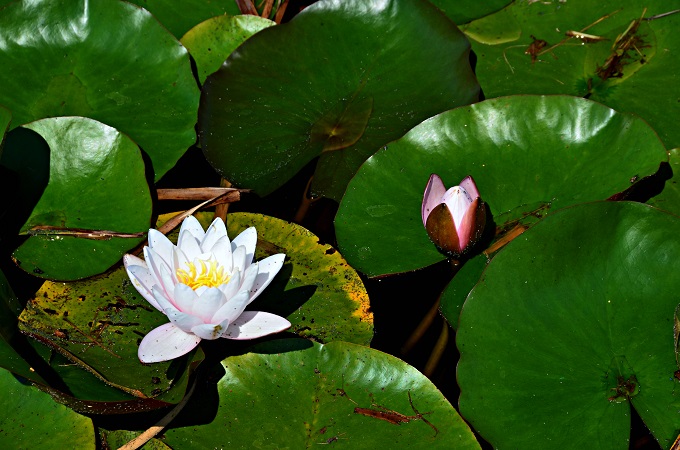
Eaglewood Films presents a short 3 minute video about Latvia:
-------------
Photo credits:
Rīga - photo from legacyglobalsports.com
Turaida castle - tourism.sigulda.lv
Amber - foto: DELFI aculiecinieks
